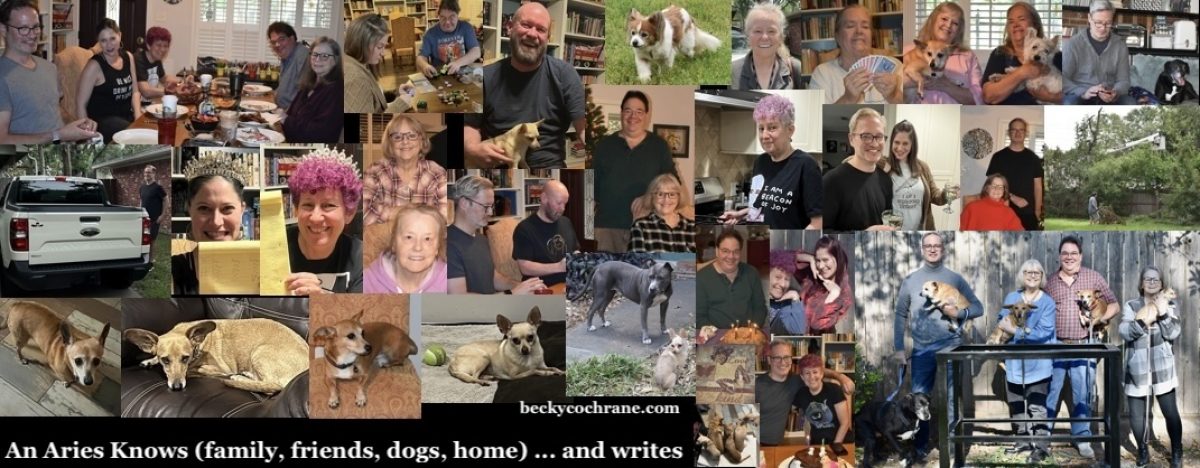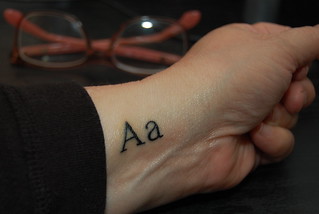
I’ve likely told some version of this story on here before, but I was reminded of it again this week when I talked to a friend with whom I once shared a workplace, a subsidiary of a large, centuries-old corporation. Corporate suggested that our subsidiary find someone to take on the task of facilitating awareness and discussion of diversity topics. I was a person approached to be “it.” I understood at least two reasons why: my background in writing and editing, and my established willingness to, on my own time, advocate for AIDS/HIV awareness during a period when that was controversial and shrouded in silence. My manager and the company had consistently approved my making a newsletter available on December 1 for World AIDS Day (written on my own time, printed at a copy place, with a red ribbon attached to each sheet with a small safety pin that could be worn, if chosen, all provided at my expense and all MY choice, not mandated by the company or my manager).
I didn’t jump at the offer to be their diversity rep because my experience with the company (including that newsletter!) had already informed me how I could be treated like a lightning rod drawing the ire of anyone who felt somehow “wronged” or “offended” by one, any, or all of the issues that would come up. (If you doubt what a problem this is, have you never read comments on damn near everything you can find on the Internet? Sure, keyboard warriors may feel more emboldened by anonymity, but many of them probably spring from people who feel equally emboldened by position or privilege to exhibit similar behaviors in the workplace.)
I ultimately decided to take it on. I don’t feel like sharing the negative impact that choice sometimes had on me, because what was more significant, to me, at least, were all the things I learned as I researched the “months” related to diversity. (I’m not sure we had all of these back then, but possibilities are Black History; Women’s History; Arab-American Heritage; Jewish American Heritage; Asian American, Native Hawaiian, and Pacific Islander Heritage; Military Appreciation and National Veterans and Military Families; Caribbean-American Heritage; Immigrant Heritage Month & World Refugee Day; Hispanic Heritage; LGBTQ Month or National Coming Out Day.) None of these would have bothered me, and I valued learning so many new things. (Also, tip: The more you learn if you’re creative, the more you can populate your work with people who and experiences that are not you or yours. Including the villains.)
I was grateful for that opportunity to get to know people not only in our smaller company but also people in corporate and other subsidiaries. I learned about challenges people faced that I would otherwise have been unaware of, and I learned about colleagues’ accomplishments and what they valued and respected about their identities. (Regrettable bonus: I also learned which people would never get any of my free time outside of work and some who were “unsafe” for employees who were part of traditionally marginalized groups. It emboldened me to communicate that I was a safe person and place and to practice rigorous discretion. Turns out that matters a lot in the workplace.)
What does this have to do with time? I’ve been trying to find better ways to respect my own time. Nobody’s paying me for it anymore; I get most of the choice in how I use it. I’ve started being more honest with myself in recognizing and acknowledging the reality of those who don’t respect or value my time so I can allocate it better. I’ve been weaning myself off of social media and being more deliberate in how I use it. Just as I eliminated most of my content on Facebook in 2016 and ended it as a contact point, I did the same with Twitter in 2022. I still have an account on each site because I want to keep my name free from possible misrepresentation (my name being connected to published novels, short stories, and anthologies, and to this website).
I recently opened a Blue Sky account to interact with some people or organizations who’d once been part of my Twitter world. I’m spending very little time on it, and have used it so far only to post to a “20 day challenge: share covers without any commentary or reasons, etc., of books that impacted you in some way.” ONLY twenty? This has been a painless way to ease onto the site.
Similarly, I’d once replaced time spent on FB with time spent on Instagram, though my own posts on Instagram have become sporadic and inconsistent. February is was? for me, remains Black History Month. Though I rarely post on Instagram anymore, I decided to use every day of the month to recognize Black history in some way (dolls, art, and coloring pages have always been part of my Instagram account, for example).
When they say that never in the history of the world have people who banned books been the “good guys,” I agree and add to that people who ridicule, forbid, and seek to eliminate awareness of what I believe are among the greatest assets our country has: the experience and value each individual or group adds to our national character. When power starts using our differences to marginalize and divide us, they are never “the good guys.”
If I’ve been willing, since 2020, to give every day of October to a skeleton with a fictitious voice and family history to indulge my creative self, my February is well spent featuring something I find more meaningful. This choice hasn’t brought a lot of engagement to my feed. It could be the algorithm, but I can see that consistently over 97 percent of the people who view my posts follow me, and most of them don’t hit that  . Could be an indicator that my energy and time have little value on Instagram, and maybe it’s time to ease away from using it as a public space, too.
. Could be an indicator that my energy and time have little value on Instagram, and maybe it’s time to ease away from using it as a public space, too.






 I don’t think anyone could miss how my personal favorite symbol is one that represents Aries (March 21 to April 19), the Ram! While I happily embrace being the first sign of the zodiac and its more admirable attributes, I never deny that I also have some of my sign’s less-stellar qualities. In typical Ram fashion, I see even Ram’s flaws as things that give me a necessary fire.
I don’t think anyone could miss how my personal favorite symbol is one that represents Aries (March 21 to April 19), the Ram! While I happily embrace being the first sign of the zodiac and its more admirable attributes, I never deny that I also have some of my sign’s less-stellar qualities. In typical Ram fashion, I see even Ram’s flaws as things that give me a necessary fire.










 . Could be an indicator that my energy and time have little value on Instagram, and maybe it’s time to ease away from using it as a public space, too.
. Could be an indicator that my energy and time have little value on Instagram, and maybe it’s time to ease away from using it as a public space, too.
